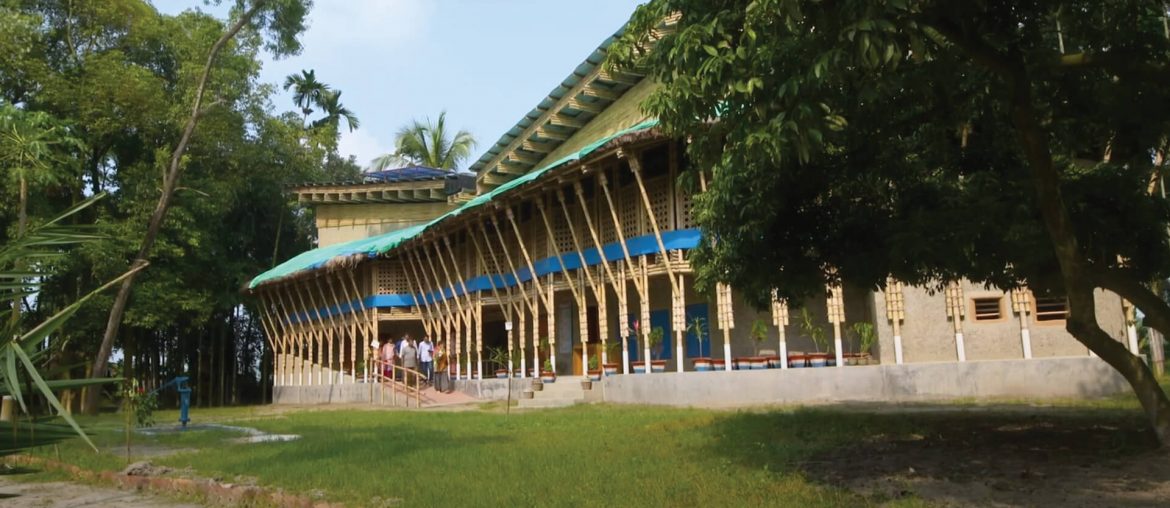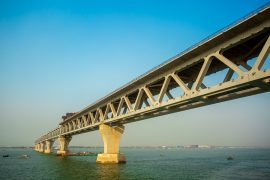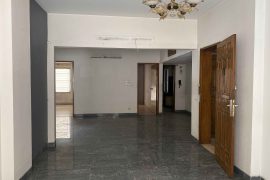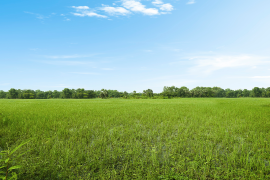While trying to revive the memories of how old schools used to be, you will most probably end up with a picture of a one-storey L-shaped building along with a tin roof ceiling. On the contrary, children nowadays perceive school as a high-rise building with air-conditioned classrooms. Amidst the presence of such a concept, it is probably a good thing to know that few amazing schools in Bangladesh are still there with wide open fields. On top of that, few architects in Bangladesh have taken the architectural style of school to an entirely new dimension. Want to know which ones are they? Let’s get started!
Dipshikha Meti School
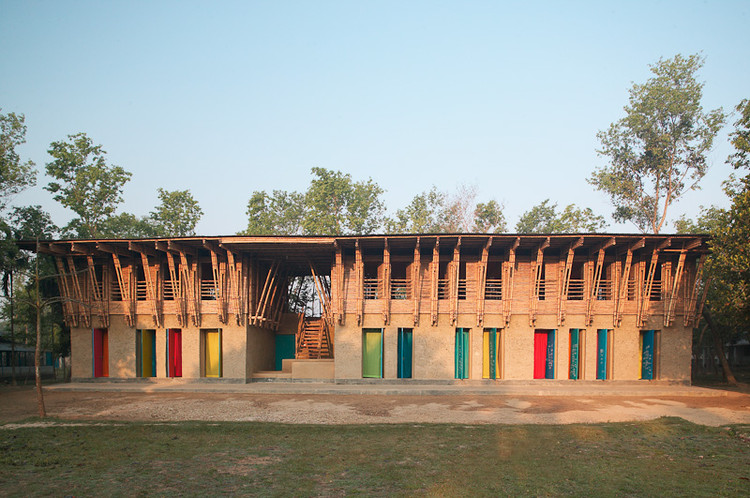
Rudrapur village of the Mangalapura union from Dinajpur upazila is known for being a simple place. In spite of the simplicity, one thing which makes this place exceptional is the presence of ‘Dipshikha Meti School’. Wondering why this school is so special? It’s because the concept and initiation of some of the amazing schools in Bangladesh came from here.
Dipshikha Meti School is entirely made of clay and bamboo and this construction style is the sole reason why this school has gained popularity all over the world. This aesthetic piece of construction even got the architect of this school, Anna Heringer the Aga Khan Award for Architecture.
A voluntary organization, Dipshikha Non-formal Education, Training and Research Society for Village Development runs the school. The entire setup of the school has been formed meticulously. To start off, the walls of the two storey and a 9 feet high school building, has been constructed with mud blended with soil and straw, with an aim of protecting the students from the sufferings of severe weather conditions, both during summer and winter seasons. The foundation of the walls consist of moisture resistant material, along with the floor plaster which has been made with palm oil and soap paste in order to make it waterproof. Bamboo mats have been placed on the rooftop in addition to tin to prevent rainwater. Dipshikha Meti School covers an area size of 8 thousand square feet, with 6 rooms in total. Overall the construction of this entire school campus incurred a cost of around BDT 17 lakh.
On September 1, 1999, Meti School was formed on a small scale in Rudrapur. Later on, the entire construction of this school began in full swing from September 2005. Right behind the school, there is a community therapy center, widely known as Anandaloy.
The tree lined streets filled with betel trees will lead you to two buildings made out of clay. The ground floor of the school has been exclusively reserved for the children with special needs. Additionally the playzone has been fascinatingly designed. There is a clay cave inside the school which is a major entertainment spot for the children and turns out to be a crucial part of the disabled kids, who get to have their treatment and physiotherapy disguised in the form of playing.
Shahabuddin School and College
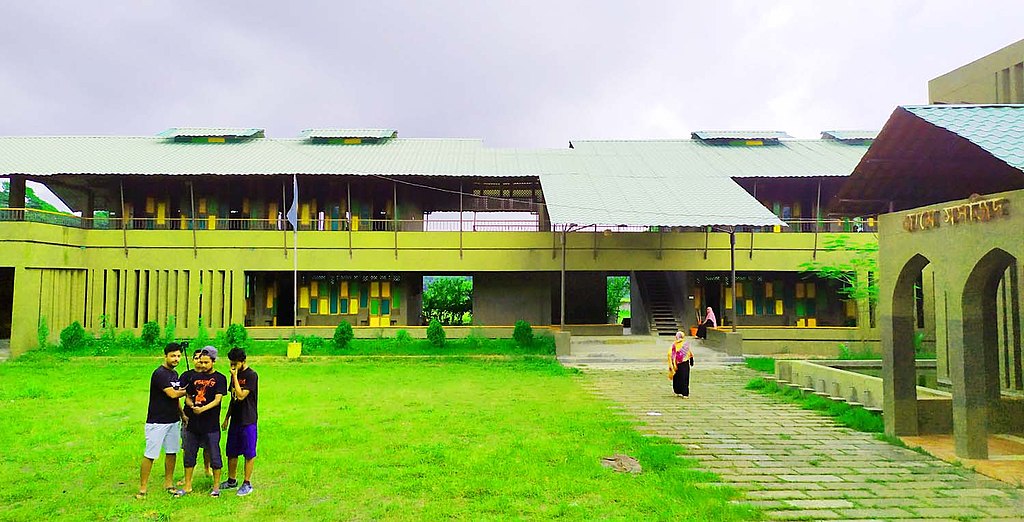
Shahabuddin School and College is located in a remote place like Chandpur and was commenced with a sole intention of providing education to the children who belonged to indigent families. Equipped with indigenous technology, Shahabuddin School and College has marked its presence in the list of the amazing schools in Bangladesh over the years.
This school has an entirely different sort of establishment and to a certain extent shares resemblance with European style building. Instead of having a rooftop, the two-storey building has got a canopy made up of cement roof sheets. As far as the classes are concerned, they are conducted with modern technological equipments, projectors.
One commendable feature of this school is its spacious porch. The energy bulbs in the porch areas and inside the classrooms are placed and wrapped around a bamboo bag, which creates a unique atmosphere. Moreover, an open field right in front along with a Shaheed Minar located on the northern side of the school campus are what makes the entire view of the school premises even more enchanting.
Floating Schools
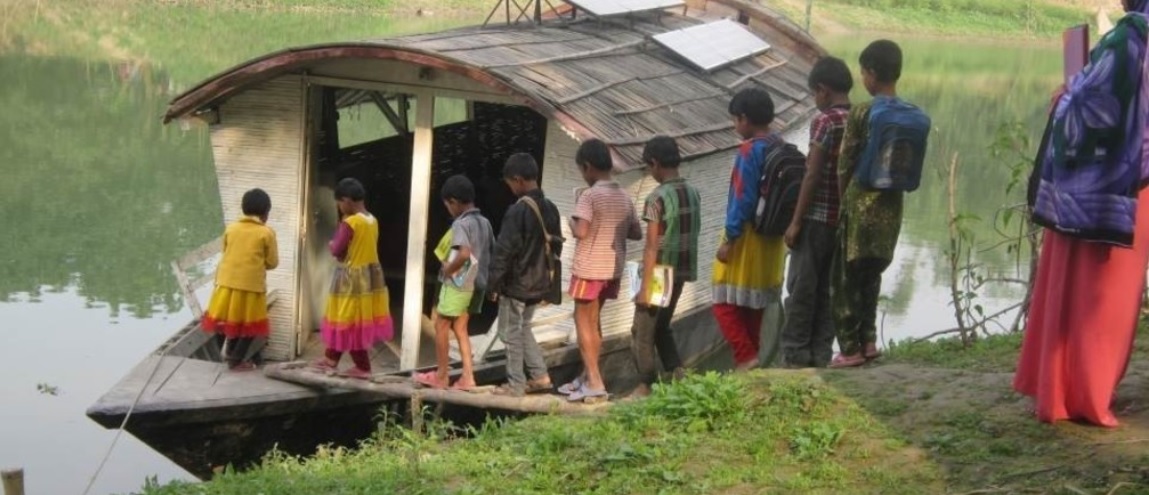
In 1998, a young architect Mohammed Rezwan formed a non-profit organization, ‘Shidhulai Swanirvar Sanstha’ in Shidhulai village of Gurudaspur Upazila in Natore. During that time, the village was flooded and was surrounded by large reservoirs. Hence, Rezwan came up with an idea of making effective use of the reservoir in order to develop the condition of the village. Finally, this thought provoking situation gave birth to the design concept of ‘Floating School’ which eventually made into the category of some of the amazing schools in Bangladesh.
The school started off in 2002 with only a scholarship of USD 500. After one year, the grant surged up to USD 5000 which eventually paved the way towards success for this floating school project.
The classroom inside the boat has been arranged and designed in a similar fashion to other regular schools. In fact this boat school is much modernernized when compared to the ones which are built on land. Apart from computers, this school possesses other electronic devices in order to ensure better educational facilities for the students.
In total, 6 solar panels have been installed on the rooftop for electricity connection. The great thing about these solar panels are, apart from the school activities these panels act as a major electricity source for the entire village.
Currently there are 22 floating schools with a bunch of 1810 children in total. Each classroom accommodates 30 students. One special attribute of this school is, both the students and their parents can avail the opportunity to learn more about computers from here.
The founder and executive architect director of this self-help organization, Mohammed Rezwan, won 14 national and international awards for contributing to the creation of one of the amazing schools in Bangladesh. Up until now, 2 documentaries have been made based on his floating school project work. Countries which are prone to the adverse conditions of climate change, like Cambodia, Nigeria, Philippines, Vietnam and Zambia have started to follow suit and started making floating schools in required areas.
The presence of such amazing schools in Bangladesh is probably painting a picture of a brighter future and unbound possibilities. This surely marks a great achievement for every one of us as well as for our country. So what are your thoughts on how schools can modify their educational services to bring more convenience to the students? Let us know in the comment section below.

